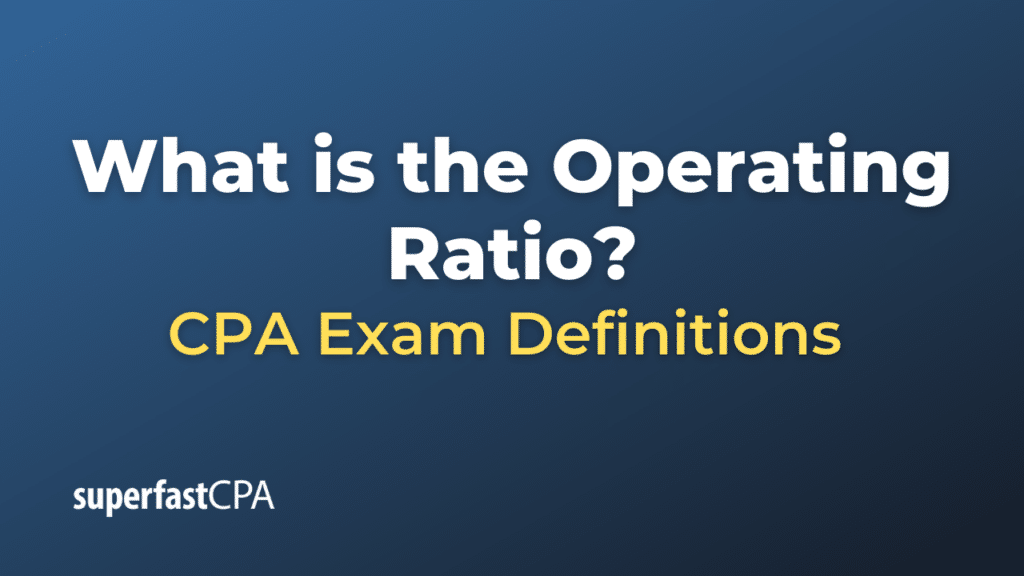Operating Ratio
The operating ratio is a financial metric used to measure a company’s operational efficiency. It shows the proportion of a company’s revenue that is used to cover its variable costs of production such as direct labor and raw materials, as well as fixed costs like rent and utilities.
The formula to calculate the operating ratio is:
Operating Ratio = (Operating Expenses / Net Sales) * 100%
Here,
- Operating Expenses are the costs associated with a company’s main operating activities and include items such as wages, rent, utilities, and depreciation. It does not include interest expenses or taxes.
- Net Sales is the company’s total revenue, less any returns, allowances, and discounts.
The operating ratio is typically expressed as a percentage, with a lower percentage indicating greater efficiency.
An operating ratio of 80%, for example, means that a company uses 80% of its sales to cover operating expenses, leaving 20% to cover non-operating expenses, profit, taxes, and dividends. If the operating ratio is greater than 100%, it means that a company’s operating expenses exceed its net sales, which could indicate inefficiency or financial trouble.
Like all ratios, the operating ratio should be used in conjunction with other financial metrics and ratios to assess a company’s overall financial health. Also, it’s important to compare the operating ratio with those of other companies in the same industry, as what is considered a good ratio can vary depending on the industry.
Example of the Operating Ratio
Let’s consider a hypothetical company called Example Corp. Here are some simplified financials for the fiscal year:
- Net Sales (Revenue): $1,000,000
- Operating Expenses (such as salaries, rent, utilities, depreciation, etc.): $600,000
Now, we calculate the Operating Ratio:
Operating Ratio = (Operating Expenses / Net Sales) * 100%
Operating Ratio = ($600,000 / $1,000,000) * 100%
Operating Ratio = 60%
So, Example Corp’s operating ratio for the fiscal year is 60%. This means that it spends 60 cents on operating expenses for each dollar of revenue it generates. The remaining 40 cents can be used to pay non-operating costs (such as interest and taxes), provide dividends to shareholders, and contribute to the company’s net income or retained earnings.
As always, this ratio is most meaningful when compared to industry peers or the company’s own historical performance. If Example Corp’s operating ratio has been steadily increasing over the years or is significantly higher than its competitors, it may be a sign of inefficiency or potential financial issues. Conversely, a decreasing ratio or one that’s lower than competitors can be a sign of good financial health and operational efficiency.














